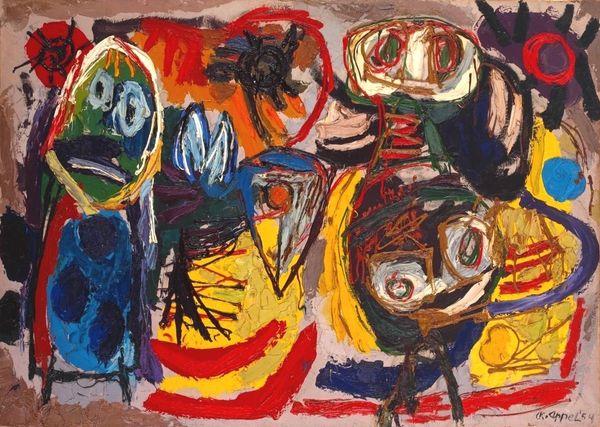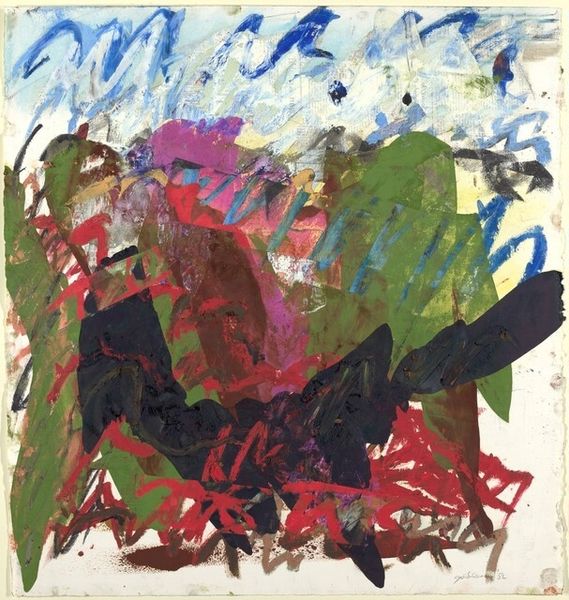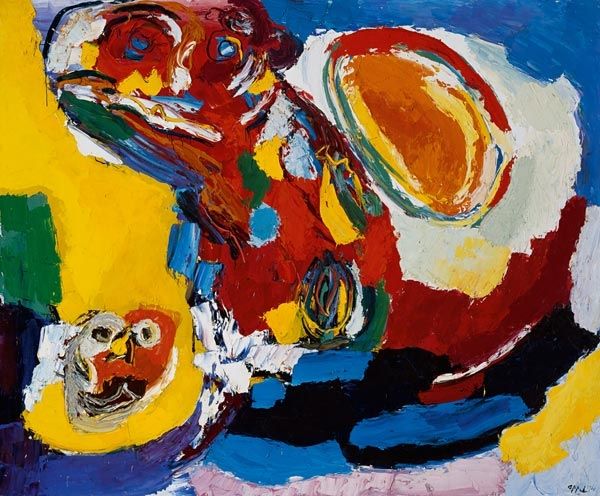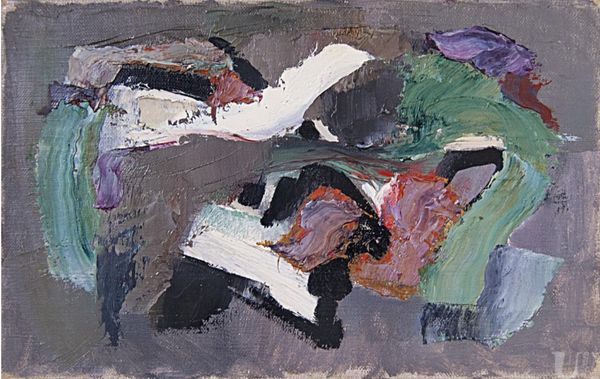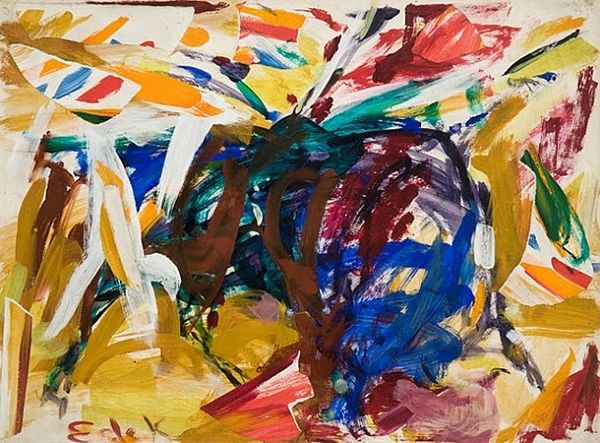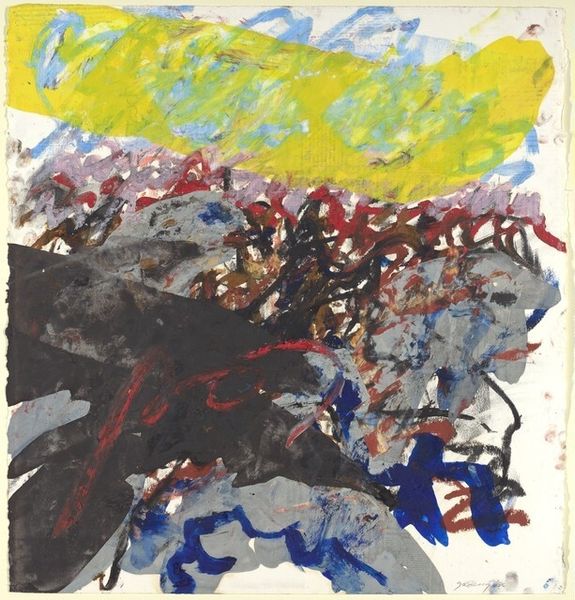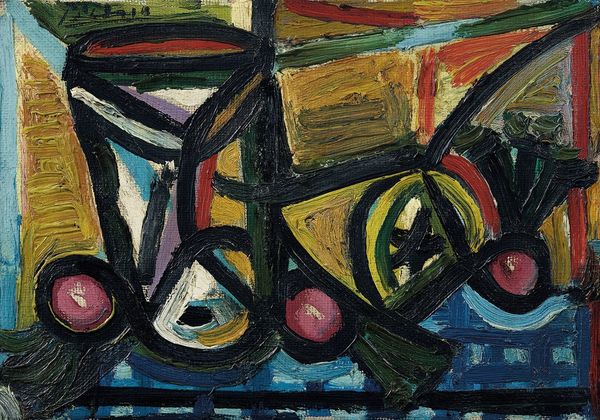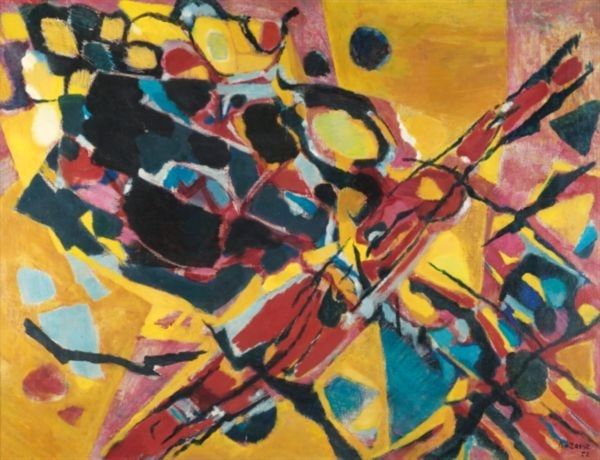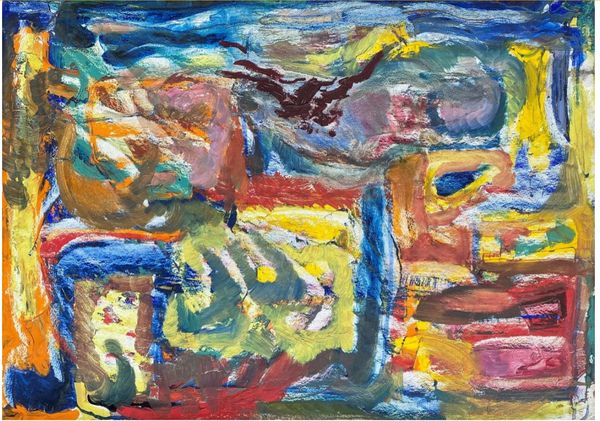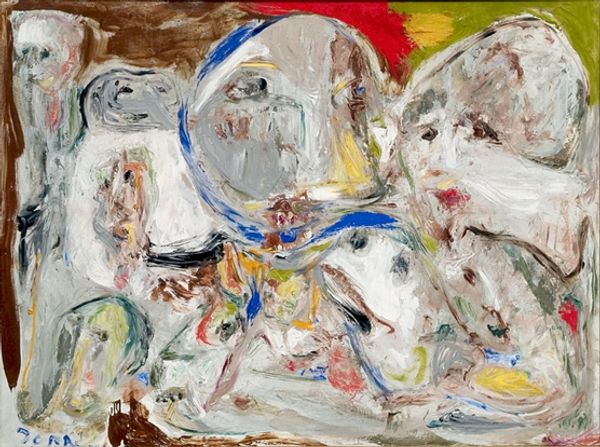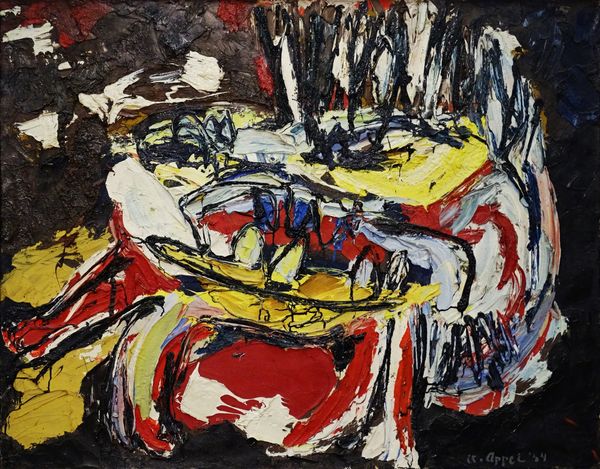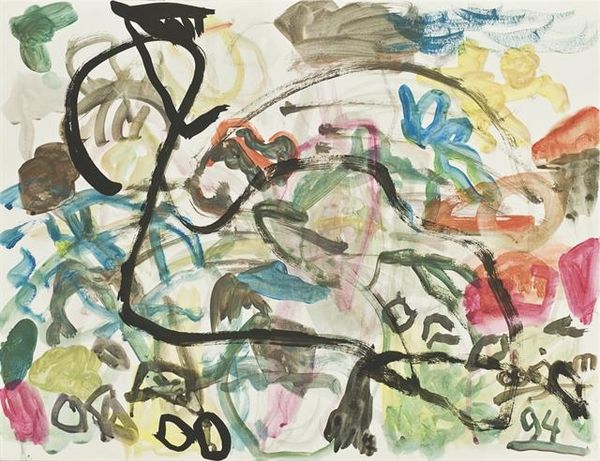
Copyright: Walasse Ting,Fair Use
Curator: Upon first glance, the visceral energy practically leaps off the canvas. The color palette, while bright, seems almost discordant, unsettling. Editor: This is Walasse Ting’s "Abstract Still Life," completed around 1950. Ting, a Chinese-American artist, moved through several styles, but this acrylic painting reflects a fascinating blend of Abstract Expressionism and Fauvist tendencies. What strikes me immediately is the visible layering, the traces of his process right there for the viewer. Curator: Absolutely. This piece, to me, speaks to the global, migratory nature of Abstract Expressionism following the Second World War. We see Ting wrestling with Eastern artistic traditions while engaging with the distinctly Western mode of gestural abstraction. Are those supposed to be peaches? Because, honestly, it’s almost as if the still life genre is being aggressively deconstructed here. Editor: Precisely! The brushstrokes are bold, almost violent, creating this dynamic interplay of forms that teeter between recognition and pure abstraction. Notice the areas where the colors clash, almost creating a sense of unease. Is Ting exploring a personal tension, perhaps between his cultural identity and the dominant artistic currents of his time? It is difficult to deny this sense that his placement within society must have been one full of struggle. Curator: That’s an astute observation. Think about the context of the 1950s—a period of intense socio-political upheaval, of identity formation. Ting, straddling these different worlds, must have felt those pressures acutely. The "still life" genre itself becomes a vehicle to represent the fractured self, a symbol of his hybrid identity that also provides an allegory for others to identify with in terms of feeling the societal pressures. Editor: Perhaps we’re also seeing Ting pushing back against the traditional expectations of the still life – a genre historically associated with domesticity and feminine virtue. He explodes the composition, infusing it with a masculine energy that undermines the expected narrative. Curator: An incisive thought. It makes us consider the subversive potential within abstraction itself, a way of challenging dominant social narratives. Ting masterfully utilized that approach. Editor: Indeed, his radical formal language resonates profoundly with those of us still grappling with issues of identity, cultural belonging, and artistic freedom. Curator: And it serves as a potent reminder of the complex interplay between art, identity, and the societies in which they come to coexist.
Comments
No comments
Be the first to comment and join the conversation on the ultimate creative platform.
